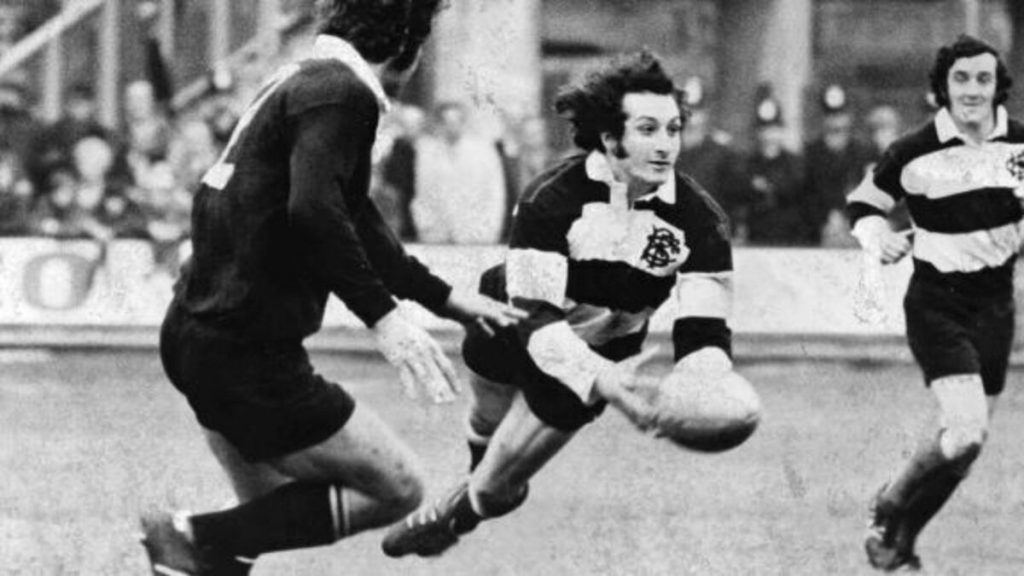Gareth Edwards’s try for the Barbarians against the All Blacks is considered rugby union’s try of the century, yet it would never have been scored in the “robotic age” of modern rugby, writes MARK KEOHANE.
On January 27, 1973, Edwards finished off a stunning seven-man move that had started near the other goal line to open the scoring in the invitational team’s celebrated 23-11 win over New Zealand in Cardiff.
In his blog on Keo.co.za, Keohane lauds the Welshman’s effort as “the try of the century”, but suggests that had the movement been played today, it wouldn’t have gone past a head high hit by Kiwi hooker Ron Urlich on JPR Williams.
“They showcased their brilliance in the Barbarians match, but in this particular instance this spectacular try only stands the test of time because it happened in a world when referees were allowed to make on-field calls, whether they got it right or wrong,” he writes.
MORE: Will this be rugby’s first R4 million jersey?
“It is said that the TMO has improved the accuracy of decision-making. That is debatable; what isn’t is that many a glorious 90-metre tries have been disallowed in the modern era because of the most debatable TMO intervention, be it the possibility of a ball going a fraction forward, or one of 20 technical interpretations that could be argued either way.
“Rugby’s romance is in how the Edwards try is remembered but it should be remembered as a try played in a romantic era where the referee was trusted to officiate on what his eyes saw on the field of play in real time.
“Rugby’s robotic age will be remembered for how every pass, collision and try was slowed down to a near freeze-frame, the result of which was determined by a person sitting in a room surrounded by several televisions and asking for several different angles from broadcast producers.
“Rugby, in the 1970s, was a contact sport played with the acceptance of on-field human error. Rugby, in 2023, is a sport played with the illusion it is a contact sport that allows for human error but in reality it is a sport played on the field but officiated from behind a television set.”





